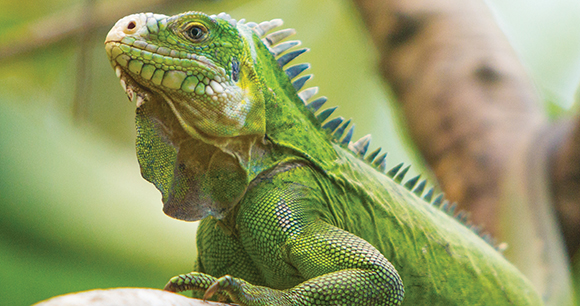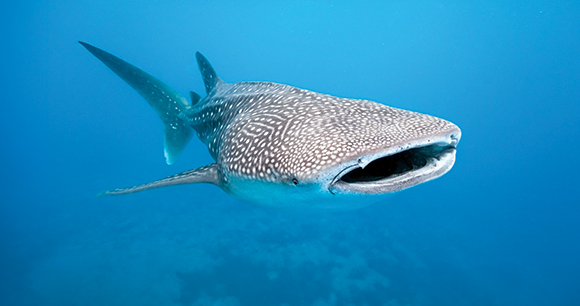The Caribbean Environment Programme was established in 1981 as one of the United Nations’ “Regional Seas” programs, in recognition of the importance and value of the Wider Caribbean’s fragile and vulnerable coastal and marine ecosystems. An action plan agreed to that year led to the 1983 adoption of the Convention for the Protection and Development of the Marine Environment of the Wider Caribbean Region (a.k.a. the Cartagena Convention)—the only legally binding treaty focused on protecting the region’s biodiversity. The Cartagena Convention includes three protocols (technical agreements) on Specially Protected Areas and Wildlife (SPAW), Combatting Oil Spills, and Pollution from Land-Based Sources and Activities. AWI is most closely involved with the SPAW Protocol, which was adopted in 1990 and entered into force in June 2000.

AWI has been involved in the development and operation of the SPAW Protocol since the outset. AWI consultants Tom Garrett and Kate O’Connell (before she joined AWI) played key roles in the protocol’s creation. AWI’s executive director, Susan Millward, has long been involved, as well, including through active participation in the Species and Exemptions Working Groups. Mentored by Tom and the late Milton Kaufmann (who also helped craft the protocol), Susan has steered AWI toward its well-established role as a recognized expert and observer at SPAW meetings, including the most recent, the Twelfth Conference of Parties (SPAW COP12) held in October 2023. AWI was also represented at COP12 by marine wildlife program director Georgia Hancock.
At SPAW COPs, typically held every two years, representatives from member states, along with observer organizations such as AWI, discuss and decide on workplans, recommendations from the SPAW Scientific and Technical Advisory Committee (in which AWI also participates), and other papers and documents submitted by parties and observers. At SPAW COP12, for example, the parties reviewed and adopted a proposal from the government of France to add Martinique Regional Nature Park to the protocol’s list of protected areas. The parties also encouraged the SPAW Secretariat and Regional Activity Centre (RAC) to provide resources to mitigate the negative consequences of the Sargassum algal inundation that has plagued the region in recent years.
Species receive various levels of protection through inclusion on one of the protocol’s annexes. AWI’s years of advocacy via the Species Working Group on listing proposals paid off at COP12 with the uplisting—from Annex III to Annex II (the highest possible for fauna)—of the oceanic whitetip shark, Lesser Antillean iguana, whale shark, and giant manta ray and the new listing of all parrotfishes and Caribbean reef shark on Annex III. For species listed on Annex II, the parties to the protocol must “ensure total protection and recovery” by (1) prohibiting the taking, possession, and killing of or commercial trade in the species and their eggs, parts, or products and (2) to the extent possible, prohibiting disturbance of the species during periods of biological stress such as breeding, incubation, dormancy, and migration. Somewhat less restrictive, Annex III requires parties to adopt appropriate measures to ensure protection and recovery of listed species.
Due to the rules of the protocol, however, the parties’ adoption of listing decisions is not always seamless or uniform. Some—such as the shark uplistings approved at this meeting—can take years to achieve. At COP12, the United States took a reservation (akin to an exception) to each of the 21 species listings agreed to at the meeting while it completes a thorough review of domestic measures required to comply with the listing requirements. The United States indicated it intends to complete this review as soon as possible so it can be in a position to withdraw the reservations and comply with the treaty with respect to these listings.
As expected, the parties adopted the RAC’s 2023–2028 Strategic Plan and the Action Plan for the Conservation of Marine Mammals in the Wider Caribbean Region, which Susan had an integral role in updating in the years since COP11. Further, the parties urged the SPAW Secretariat to facilitate collaboration with other Cartagena Convention protocols to aid efficient implementation of the various agreements’ subprograms. Such collaboration is important given the extensive effects land-based pollution and oil spills can have on marine environments.

Another important moment came when the parties recognized the contribution of nongovernmental organizations to the implementation of the Cartagena Convention—and to the SPAW Protocol, in particular—and welcomed the establishment of the SPAW Consortium. The consortium was co-founded by AWI, Monitor Caribbean (an organization founded by Milton Kaufman and on whose board Susan now sits), the Foundation for Development Planning, the Lightkeepers Foundation, and WIDECAST as a vehicle to strengthen and expand the network of NGOs that play a critical role in the formation and implementation of the protocol’s protections. AWI sponsored a successful side event during the week to introduce the consortium to delegates and other meeting participants. With a keynote address by Chris Corbin, coordinator of the UN Caribbean Environment Programme, the SPAW Consortium was firmly launched.
The same side event featured presentations on the Caribbean Wildlife Enforcement Network (CAR-WEN), to which AWI serves as a supporting partner and advisor. Led by representatives from Trinidad and Tobago and the Bahamas and facilitated by Sustainable Innovation Initiatives’ Nurture Nature Campaign, CAR-WEN aims to enhance enforcement efforts and combat wildlife crimes through collaboration between regional governments, NGOs, and other stakeholders. The initiative draws inspiration from the operations of wildlife enforcement networks in other regions. We are excited about CAR-WEN’s potential to foster collaborative efforts to protect wildlife in the region and will continue to provide updates on its development and evolution.
AWI also participated in the concurrent half-day Workshop on Innovative Strategies for Shark and Ray Management, part of the RAC’s Caribbean Marine Megafauna and Anthropogenic Activities (CAMAC) project. The Caribbean is home to a wide range of shark and ray species found in a variety of habitats and ecosystems—creating challenges for their management. This workshop presented several examples of innovative management strategies and addressed considerations for future priorities. Through CAMAC, an action plan to increase our knowledge of the region’s sharks, rays, and related species is being developed by the Dutch Elasmobranch Society.
All in all, years of planning culminated in a very busy but successful and productive COP12.